Story and photos by Anita Westervelt, Texas Master Naturalist
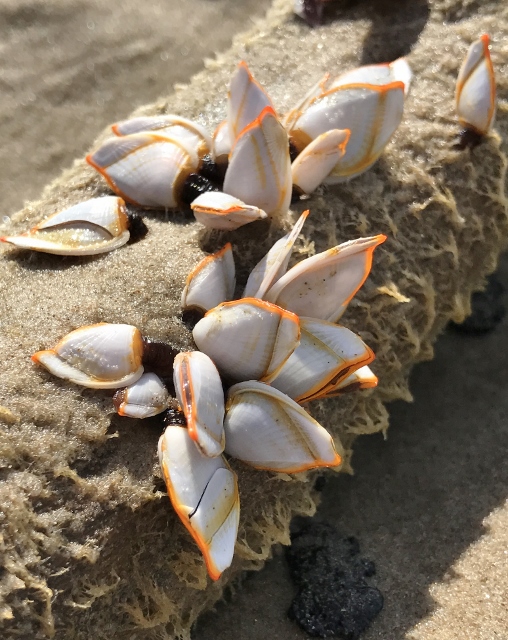
Barnacles are small sea creatures with a shell. They are found at the bottom of boats, dock posts and pilings, shoreline rocks, shells, and other submerged surfaces. For the beachcomber, they’re readily available on flotsam washed ashore. As a matter of fact, nothing’s safe if it’s solid and submerged — barnacles are everywhere!
Barnacles are crustaceans (Cirripedia) and related to lobsters, crabs and shrimp. The two most common types of barnacles are acorn and goose, both of which can be found on substrates washed up on local beaches.
Acorn barnacles, the most common, are squat, limpet shaped with a tough outer covering made up of five calcareous plates that surround and protect the soft body cavity of the live critter. These plates are opened or closed with muscular contractions; the plates push outwards at full tide so the barnacle can feed and close as the tide withdraws, leaving a tiny opening for oxygen to enter and prevent it from drying at low tide.
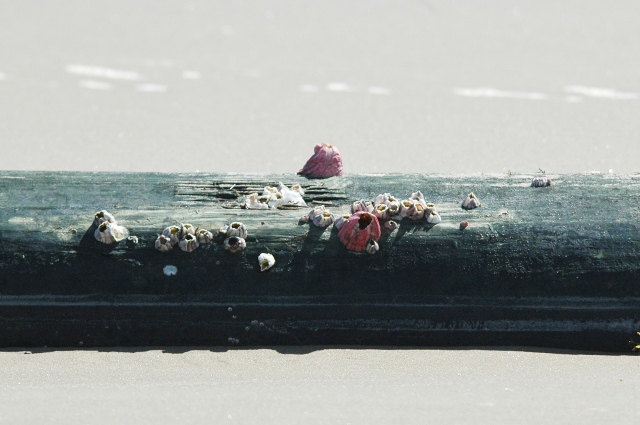
Goose barnacles, on the other hand, have a long stalk, called a peduncle, the base of which attaches to a submerged platform. The main part of the body, the capitulum, is at the other end and enclosed in a toughened carapace similar to that of acorn barnacles; the peduncle is muscular and capable of movement.
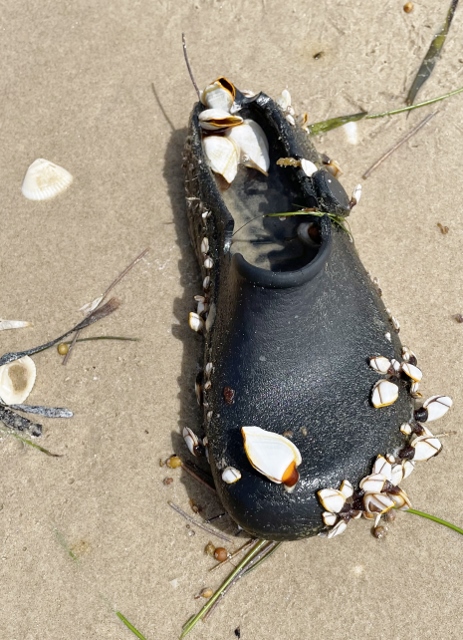
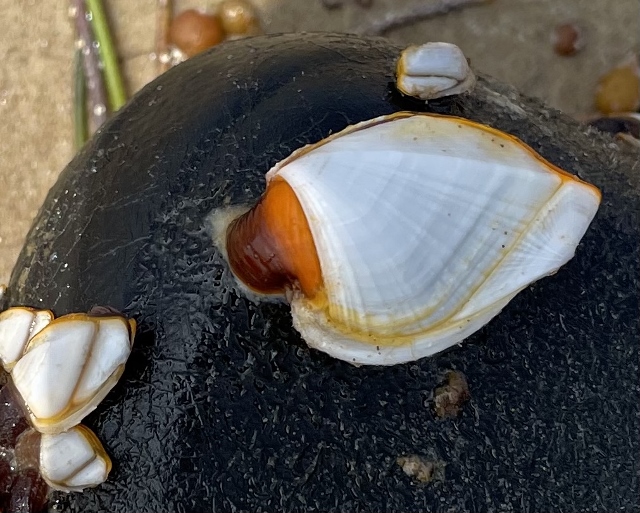
Barnacles have two larval stages. The first, nauplius, is where it floats wherever wind and sea action take it and lasts about two weeks while it eats and molts. Extensions on their head help with movement; they usually have one eye. The second larval stage, the cyprid, is where the nauplius metamorphoses into a non-feeding organism and can swim more strongly. Cyprid has a mission: to find a good surface to settle on and cement itself. It attaches to a surface by its antennas. Within 12 hours of attachment, a mature barnacle with a shell is produced.
Barnacles stick to pretty much anything they come in contact with: flotsam and jetsam, wood, plastic, shells, discarded shoes, driftwood, sea beans — anything solid adrift in the sea; how they do that is pretty amazing: they secrete a fast-curing cement that is among the most powerful natural glues known; it has been noted to have a tensile strength of 5,000 pounds per square inch and an adhesive strength of 22-60 pounds per square inch.
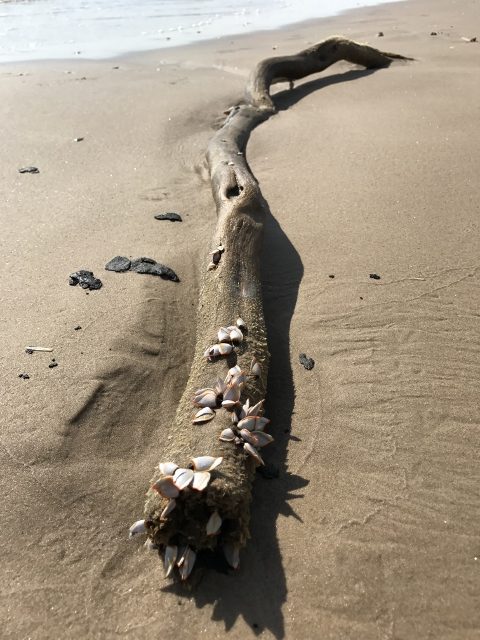
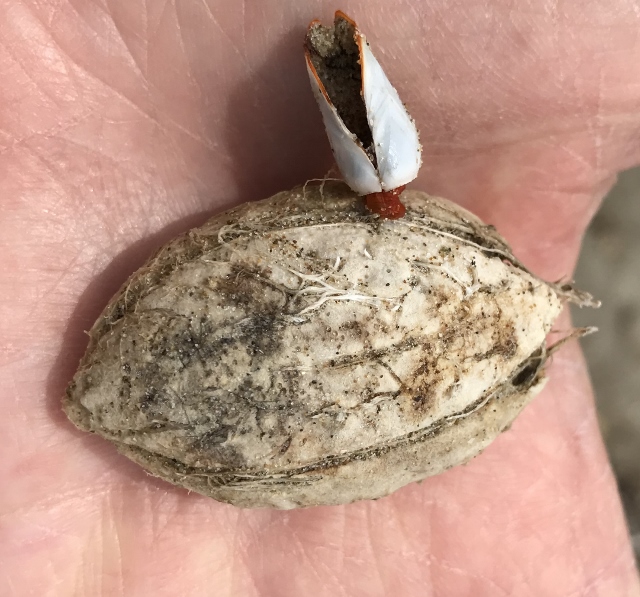
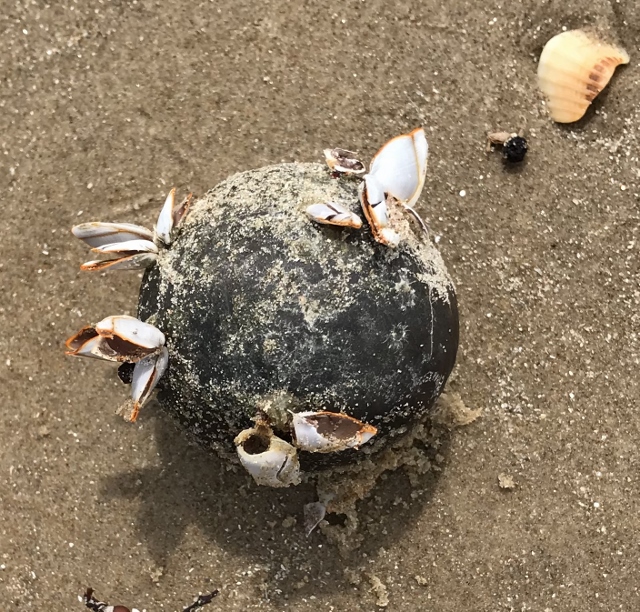
Once a barnacle goes from its non-feeding larvae stage and cements itself to its forever home, it’s just the beginning. Barnacles now begin to eat and grow. They eat using their six pairs of feather-like feet called cirri. These cirri also are used by barnacles to breathe. Since they don’t have gills, they absorb oxygen from the water with their cirri.
Because barnacles are omnivorous, eating only what is plentifully swimming and floating within reach of their cirri, they generally don’t starve. They eat phytoplankton (plants) and zooplankton (animals). They eat by rapidly extending and retracting their cirri through the opening at the top of the barnacle, combing the water for microscopic organisms. They can quickly withdraw into their protective shells if they sense a potential threat.
Storms at sea this time of year churn up a lot of activity that eventually ends up on our beaches. Get in some beachcombing and look for barnacled pieces of driftwood and other flotsam.
– 30 –